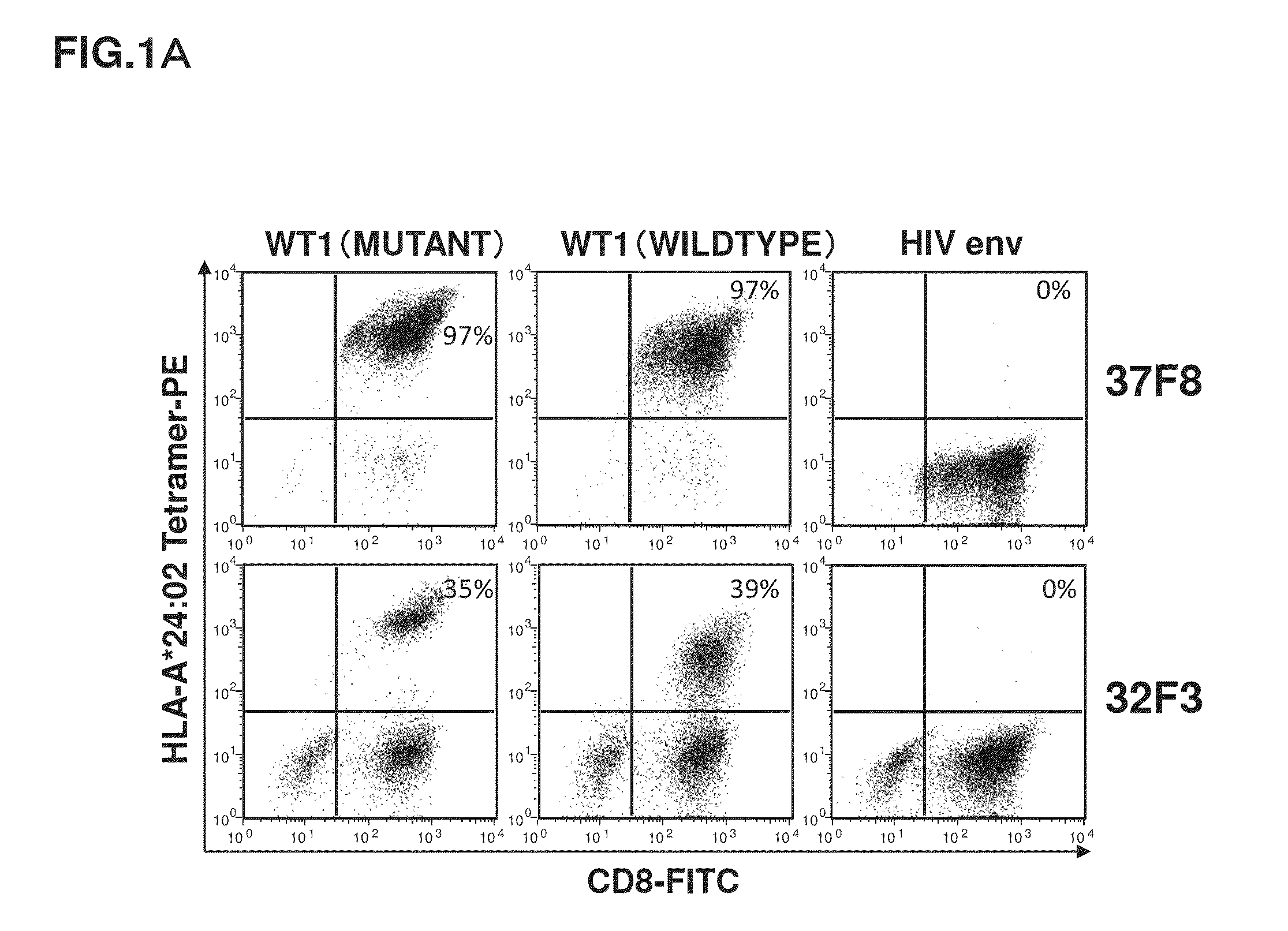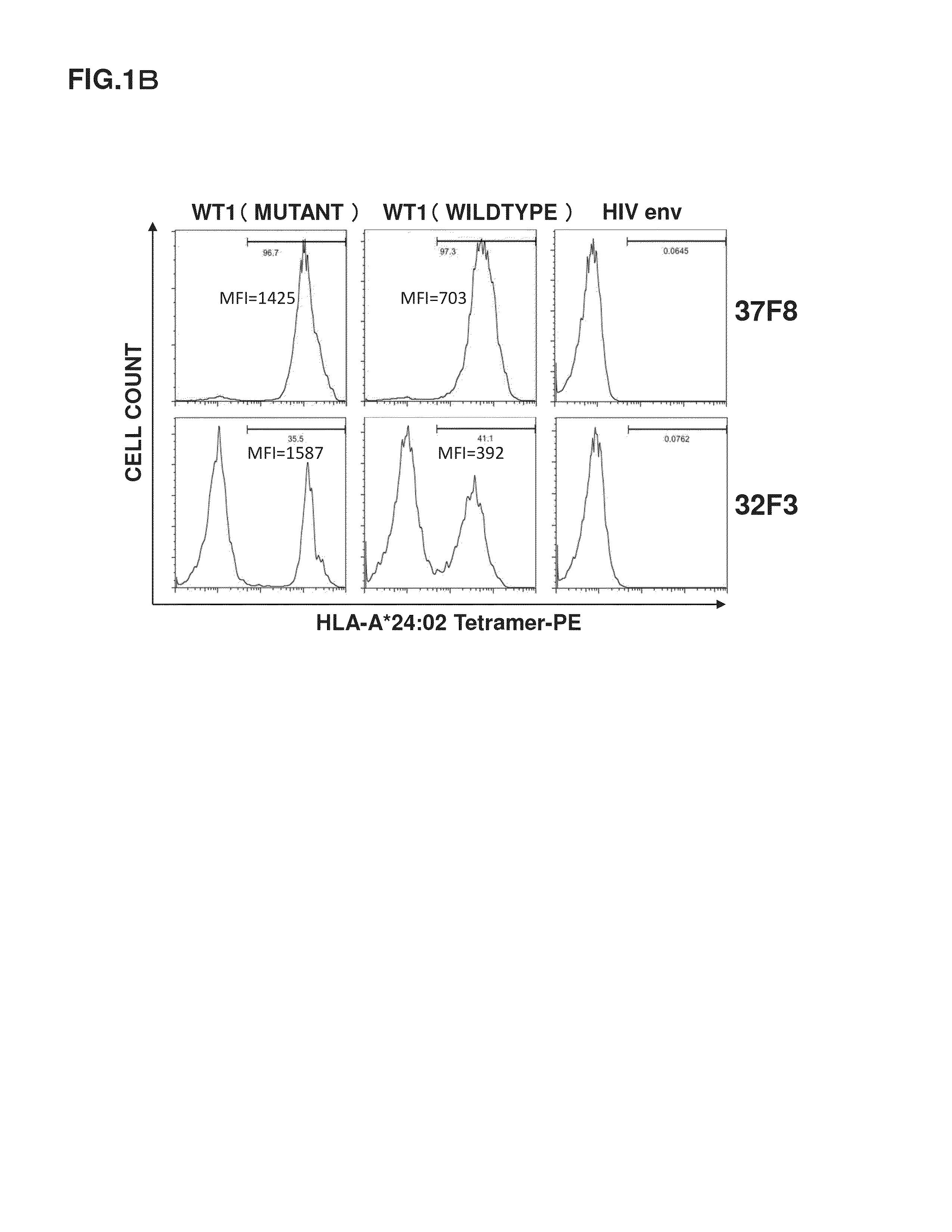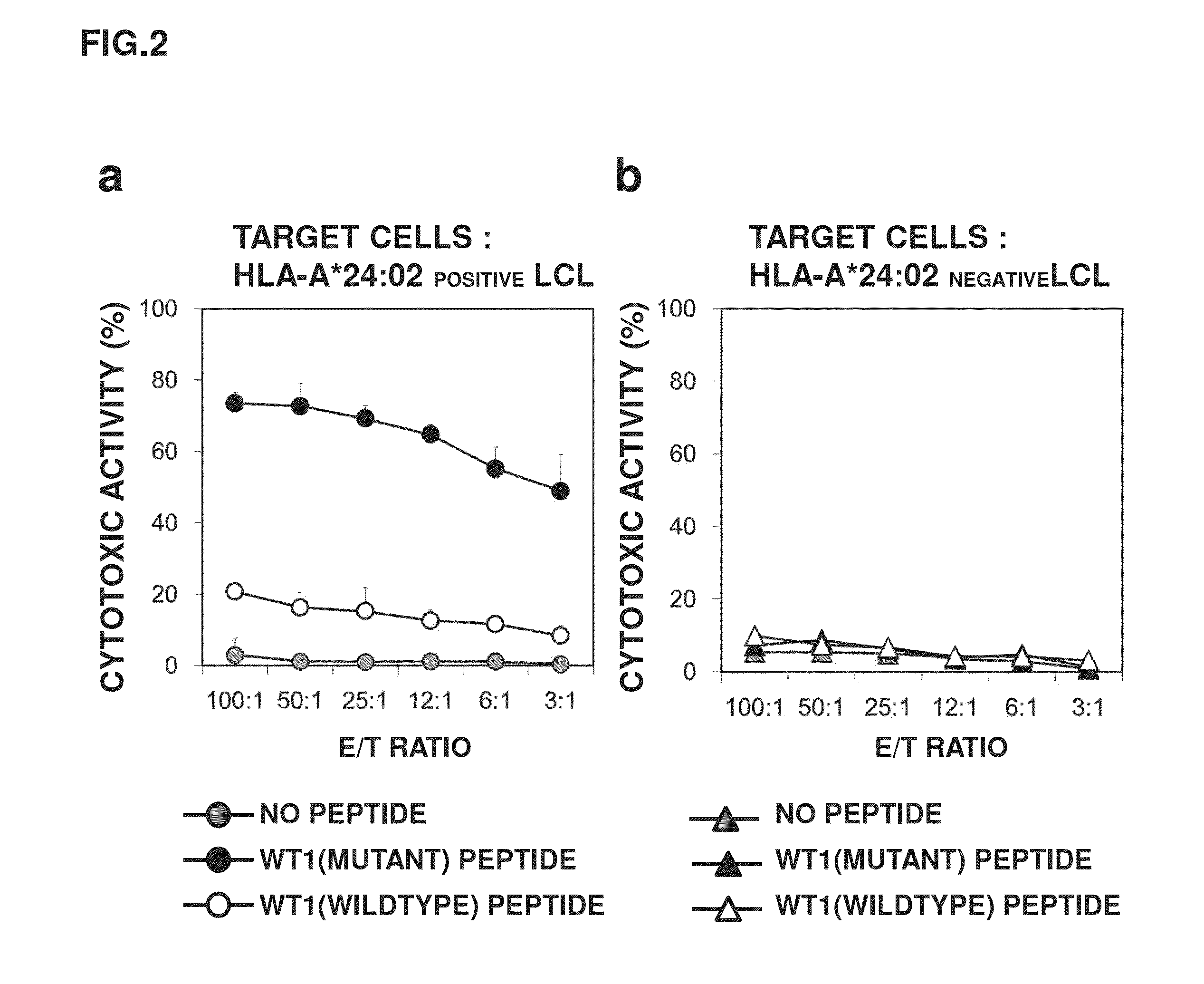T cell receptor and uses thereof
a t cell receptor and receptor technology, applied in the field of isolated t cell receptors, can solve the problem of difficult to accurately calculate the diversity of t cells, and achieve the effect of efficient detection
- Summary
- Abstract
- Description
- Claims
- Application Information
AI Technical Summary
Benefits of technology
Problems solved by technology
Method used
Image
Examples
example 1
Induction of HLA-A*24:02 WT1 Peptide Specific CTL Lines, and Culturing for Proliferation
[0110]Using various cancer antigen-derived peptides, the present inventors repeatedly examined and modified a MLPC (mixed lymphocyte-peptide cultures) process, by which a cancer antigen specific CTL was efficiently cultured to proliferate under limiting dilution conditions, with reference to the paper by Karaniks et al. reported in 2003 (J. Immunol., 2003; 171: 4898-4904). The inventors utilized the MLPC method as an induction method for cancer antigen specific CTL. The present inventors have empirically found out that the ratio of cancer antigen specific CTL present was less than 1 relative to 1×107 of peripheral blood mononuclear cells (PBMCs) from healthy subjects. For example, when 5×105 PBMCs are added to each well of a 96-well plate to induce CTLs, specific CTL induction is observed in at most 5 wells among the 96 wells. Thus, it can be said that this condition is limiting dilution conditio...
example 2
Checking Cytotoxic Activity of 37F8
[0122]It was revealed that cells having TCRs capable of reacting with the HLA-A*24:02 WT1 tetramer reagents existed at a ratio of 97% in 37F8. Meanwhile, the HLA-A*24:02 WT1 tetramer reagents are complexes each constituted of three components: artificially synthesized HLA-A*24:02, β2-microglobulin, and a WT1 peptide. Accordingly, it is necessary to check whether the TCRs are capable of recognizing the three-component complexes expressed on the actual cell surface. Further, whether or not CTLs having the TCRs are activated by binding between the TCRs and the three-component complexes and can demonstrate a cytotoxic activity on cells expressing the three-component complexes is important to infer whether lymphocytes having α-chain and β-chain of the 37F8-derived TCR artificially introduced and expressed function in vivo. For this reason, measured was the cytotoxic activity of the CTL cell population (37F8) specific to HLA-A*24:02-restricted WT1 peptid...
example 3
Repertoire Analysis on TCR of WT1 Specific CTL Cell Population 37F8
[0127]The present inventors thought that information obtainable before genetic information extraction should be obtained in order to avoid unpredictable mutation insertion attributable to PCR repeatedly carried out in the process of obtaining genes. For this purpose, a kit (IOTest beta Mark TCR Vβ Repertoire Kit, Beckman Coulter, Inc.) was used, which was capable of repertoire analysis on 24 types of a Vβ region of TCR β-chain by flow cytometry using antibodies capable of specifically recognizing the Vβ region. The kit includes the following 24 antibodies specific to the TCR Vβ region: Vβ1, Vβ2, Vβ3, Vβ4, Vβ5.1, Vβ5.2, Vβ5.3, Vβ7.1, Vβ7.2, Vβ8, Vβ9, Vβ11, Vβ12, Vβ13.1, Vβ13.2, Vβ13.6, Vβ14, Vβ16, Vβ17, Vβ18, Vβ20, Vβ21.3, Vβ22, and Vβ23. This kit is capable of detecting approximately 70% of the TCR β-chain Vβ region, and identifying information only on the TCR β-chain Vβ region.
[0128]FIG. 3 shows the result of the st...
PUM
| Property | Measurement | Unit |
|---|---|---|
| molecular weight | aaaaa | aaaaa |
| molecular weight | aaaaa | aaaaa |
| concentration | aaaaa | aaaaa |
Abstract
Description
Claims
Application Information
 Login to View More
Login to View More - R&D
- Intellectual Property
- Life Sciences
- Materials
- Tech Scout
- Unparalleled Data Quality
- Higher Quality Content
- 60% Fewer Hallucinations
Browse by: Latest US Patents, China's latest patents, Technical Efficacy Thesaurus, Application Domain, Technology Topic, Popular Technical Reports.
© 2025 PatSnap. All rights reserved.Legal|Privacy policy|Modern Slavery Act Transparency Statement|Sitemap|About US| Contact US: help@patsnap.com



